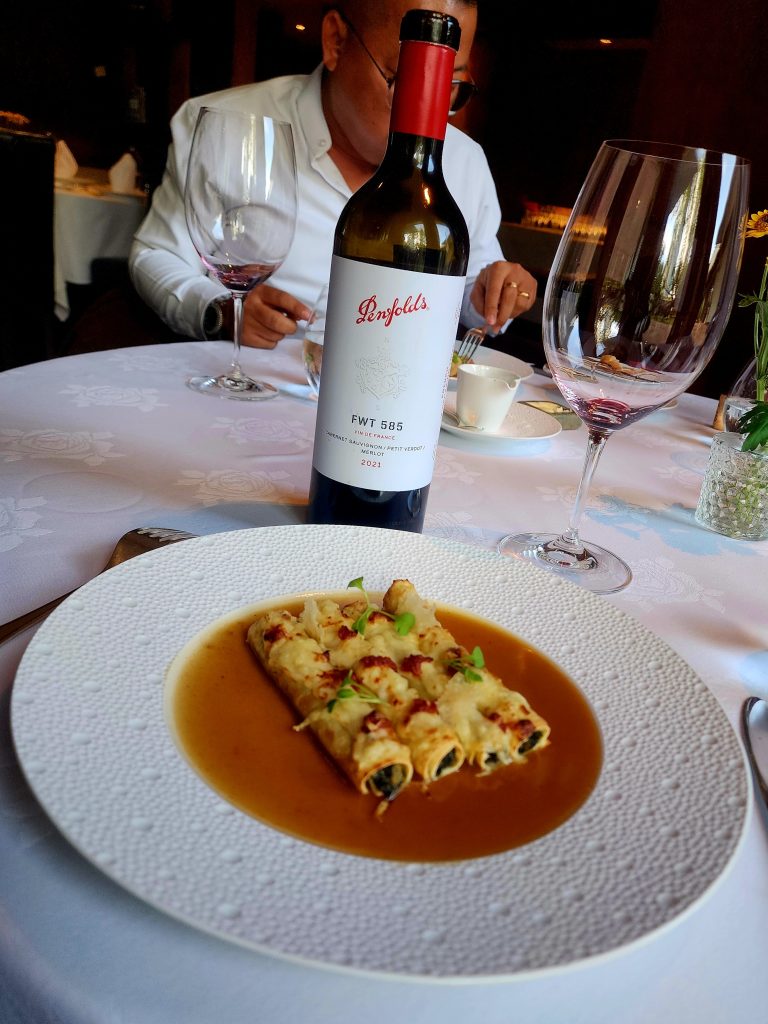
Tasting with Toto
My dear friend Mr Seila sometimes goes by his digital moniker ‘Bong Toto.’ In Khmer, ‘Bong’ means older brother, though ‘Oun Proh’—younger brother—would be more accurate when I address him.”
Toto is the passionate and ever-enthusiastic representative for Penfolds wines in Cambodia. He does an absolutely fantastic job of it, and they are truly fortunate to have him, but I am sure the powers that be at Penfolds know that already.
He is also a member of the Cambodia Sommelier’s Association and someone very generous and giving with his time, his vast knowledge, and his industry experience. Seila is always bringing others into the circle of wine, helping them to share in the pleasure and joy that we discover in it.
Seila and I have organised and conducted numerous wine events together, and we enjoy each other’s company -whether working or meeting with good friends and colleagues to share bottles of wine—good, great, and occasionally, truly grand.
I was absolutely delighted when he asked me to attend and assist in a tasting for the Sommelier’s Association of Penfolds’ latest release of the ‘international section’ of their extensive and ever-expanding portfolio. Namely, wines from their Champagne collaboration with Thienot, their Californian reds and the newest release of their Bordeaux red wine.
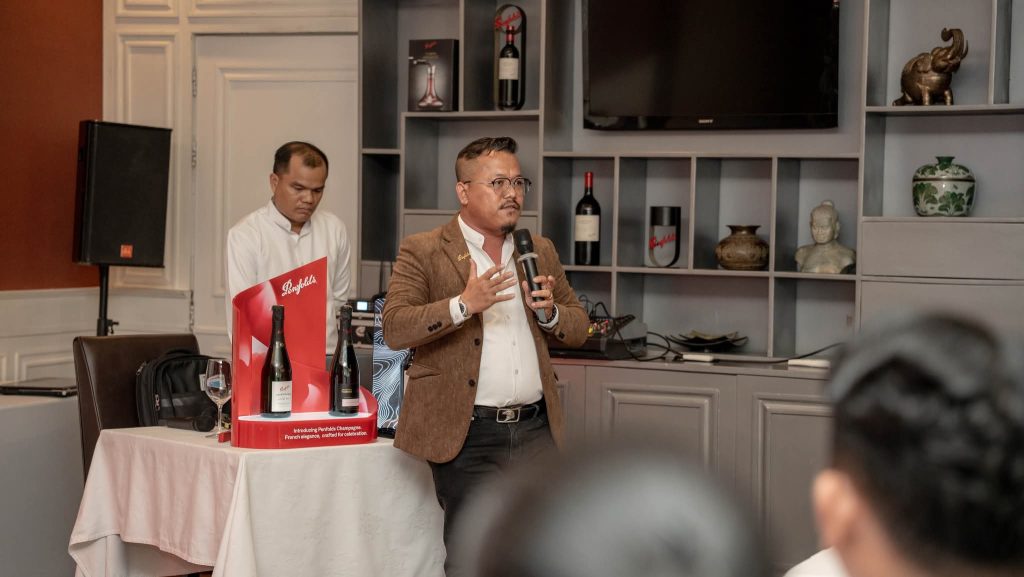
A Brave New World
Many already know the Penfold story, of how Dr Christopher Rawson Penfold and his young wife Mary sailed to the new colony of South Australia on board the vessel the Taglioni, with little more than bold hope and a few vine cuttings. In 1844, they purchased the Magill, (originally “Mackgill”) Estate, comprising five hundred acres of ‘the choicest’ land.
By all accounts, it was Mary Penfold who was responsible for the management and early winemaking duties at the fledgling wine estate. Initially, the wines were prescribed as tonics for the Doctor’s patients, the famous Penfolds slogan ‘1844 to evermore’ harking back to these origins. By 1870, the ‘Grange’ vineyard encompassed over sixty acres with several different grape varieties including Grenache, Verdelho, Mataro (Mourvèdre), Frontignac and Pedro Ximenez. The estate was producing both sweet and dry red wine and white table wines, with a growing market in the eastern Australian colonies of Victoria and New South Wales.
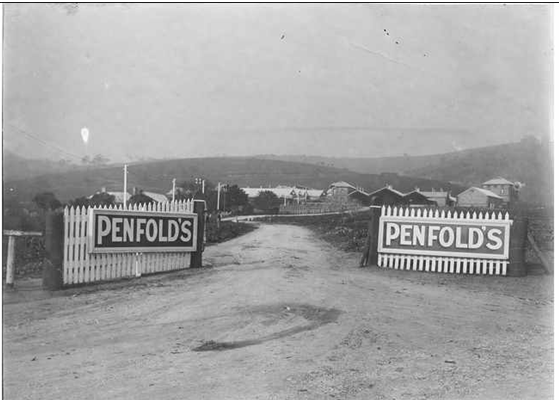
A catalogue from 1889, lists wines from the Grange and Magill vineyards as Mataro, Grenache, Constantia, Grange Port, Frontignac, Grange Tawny, Pedro Ximenes, Tokay, Madeira, Grange Sherry, and Muscadine. The catalogue adds: “We have also light red and white dinner wines of claret and Riesling types, suitable for use in Clubs.”
By 1907, Penfolds had become Australia’s largest winery. In a vast, sparsely populated land with no refrigeration and long delivery routes, fortified wine production dominated the industry, and Penfolds built a formidable reputation for such wines. A reputation which continued to grow throughout the 1920s and 1930s. Between the world wars, the market for fine table wine in Australia remained extremely limited; however, Penfolds did produce a ‘vino rosso’ style red for the Italian migrants working in the cane fields of Queensland.
In 1943, Penfolds acquired the highly regarded and valuable Auldana Vineyard and winery – adjacent to the Magill vineyard. In 1945, Penfolds purchased the Kalimna Vineyard in the Barossa Valley – at this time, the largest vineyard in South Australia. By the late 1940s, Penfolds had acquired or planted vineyards in McLaren Vale, Griffith, the Hunter Valley, and several other wine regions across the country.

Grange
Max Schubert joined the company in 1931 as a 16-year-old messenger boy. By 1948, he was chief winemaker at just 33 years old, a position he would hold for almost 30 years.
In 1949, following WW2, with a dramatically changing demographic and wine market in Australia, Schubert was sent to France and Spain to learn more about fortified winemaking, but whilst there, he fell in love with the dry, full-bodied, long-lived red wines he discovered during a side trip to Bordeaux. When he returned to South Australia, Schubert set about attempting to create Australia’s great full-bodied, dry red wine with the ability to age.

He decided to call it “Grange” after Grange Hermitage (or cottage), the original home of Penfolds’ founders Dr. Christopher and Mary Penfold in South Australia.
The first vintage produced was a small amount of wine from the 1951 vintage, when it was finally bottled and shown to critics (in 1957), they hated it. Also in 1957, the 1952 vintage was the first commercial release of the wine, which Schubert called “Grange”; it was made with 100% Shiraz. This, too, did not receive a favourable reception, roundly panned by the wine critics of the day.
As Max himself put it “The results were disastrous.” One well-known wine critic made the following remark “Schubert, I congratulate you. A particularly good dry port, which no one in their right mind will ever buy, let alone drink.”
It was then that the pioneering winemaker was ordered by his superiors, the Penfolds board of management, to cease and desist with production of his experimental wine. Thankfully, Schubert ignored these instructions from on high, hid the existing stock and continued to produce the wine in 1957, 1958 and 1959, which are today known as the ‘Secret Granges’.
The 1951’s that survive today are rare, never commercially released they are almost impossible to find, until the odd one pops up at Auction, the most recent example being in 2020, where it fetched AUD$ 103,000 for a single bottle of the wine. In 2019 a collection of one bottle of every Grange from 1951 to 2015 fetched AUD$372,000 at an auction in Australia.
By the 1955 vintage, Max Schubert was starting to understand the vineyards and the winemaking required, and he was really hitting his straps. Once the wine was mature enough and now with 10% Cabernet Sauvignon added to the blend, reviews internally (by the board of directors and their trusted wine critics) were more favourable. So much so, that in 1960, Schubert was once again given license to commence with the project ‘Grange’.
By 1962, the board at Penfolds were confident enough to enter the wine into the wine show circuit; it won a gold medal in the Royal Sydney Wine Show ‘Open Claret’ class, which pleased Max greatly, as some of the judges were the very same who had roundly criticised the wine and its style earlier on.
The 1955 Grange remains the most awarded in the wine’s history, winning twelve trophies and fifty-two gold medals. Penfolds reportedly withdrew it from competitions to allow some of their other wines a chance at winning some gold.
With renewed endeavour, Schubert oversaw the creation of a series of new, fuller-bodied, dry red wines, wines that had begun as a part of his initial project and would go on to become great and eventually iconic wines in their own right: Bin 389, Bin 707, Bin 28 and Bin 128. These are wines that may differ in character from year to year but bear an unmistakable resemblance to each other. The backbone of Penfolds’ red wine portfolio and their inimitable ‘house style.’ The famous ‘Bins’ get their names from their initial ‘Batch Identification Number,’ which would signify where they would be stored in the vast cellars.
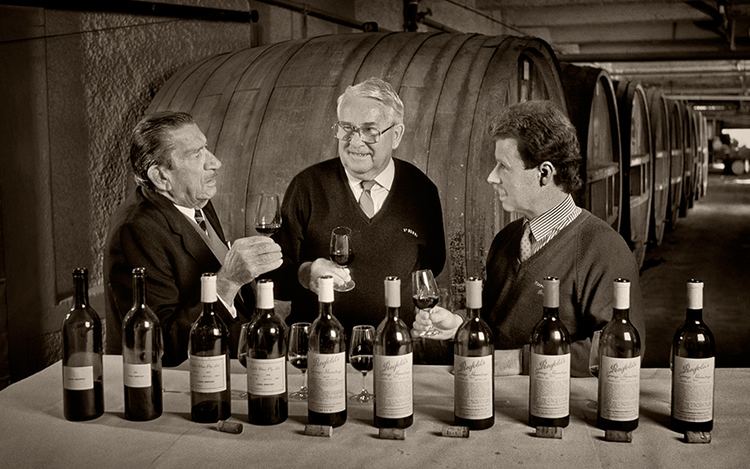
There have only been three other winemakers to be charged with crafting vintages of Penfolds Grange since the retirement of Max Schubert in 1976. Max passed the role on to Don Ditter who stayed in the role until 1986, then it was the turn of John Duval until 2002, when the torch was passed on to veteran oenologist and former Penfolds chief development winemaker, Peter Gago.
I first met Peter when he was still the development winemaker there. We attended a ‘Master of Wine’ summer program together in Sydney, where we bonded over the fact that we were the only two people who were from wineries there. The rest were from further down the supply chain, such as sommeliers and retailers. We would manage to bump into each other from time to time at various events and trade shows. There was one epic tasting and dinner with some mutual clients in the Max Schubert cellar at Magill Estate (unforgettable).
I have had a lot of time and admiration for Peter Gago, not only for his obvious gifts as an extremely talented winemaker, but also because I remember him as always being exceptionally accommodating, friendly, and comfortable sharing his knowledge and insights with others. Peter’s phenomenally successful stint in the role continues, and both his wines and he as a winemaker have become two of the most famous wine entities in the world today.
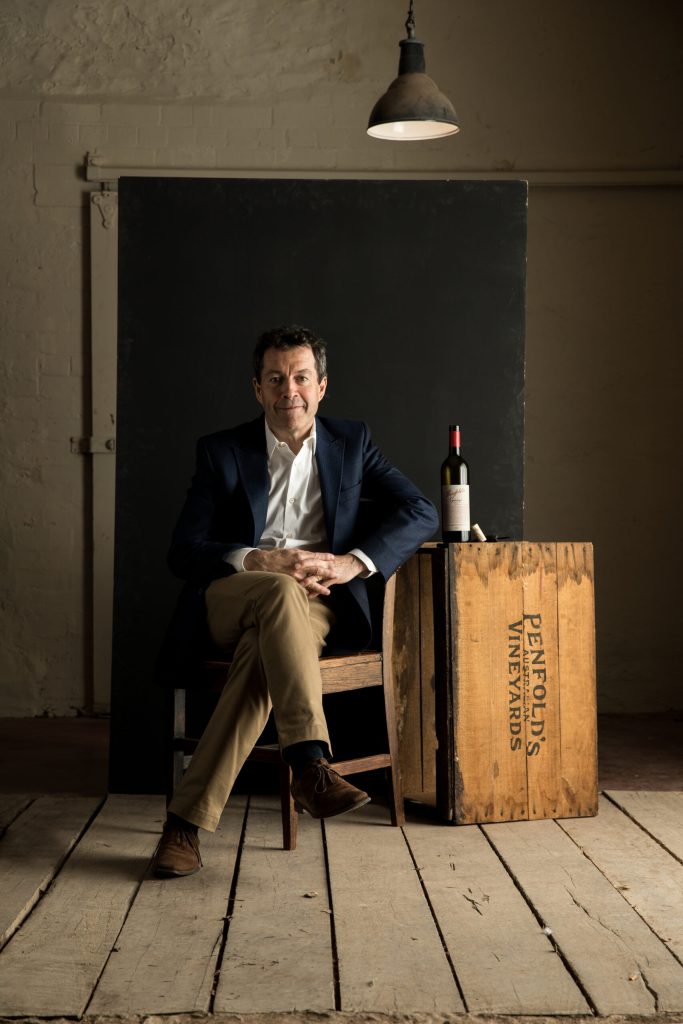
Awards
Penfolds Grange has received numerous accolades, including being recognized as a South Australian heritage icon since 2001, winning an unfathomable number of trophies and gold medals (The 1955 vintage alone won over 50 gold medals), and achieving over 30 perfect scores from the world’s leading wine critics -and counting.
Penfolds is the only Australian Winery to receive 100 points from both Wine Spectator (US) and Robert Parker’s Wine Advocate (US) for the same Vintage (2008 Grange). In 2017, Grange was classified as a First Growth in Liv-ex’s published recreation of the Bordeaux 1855 classification.
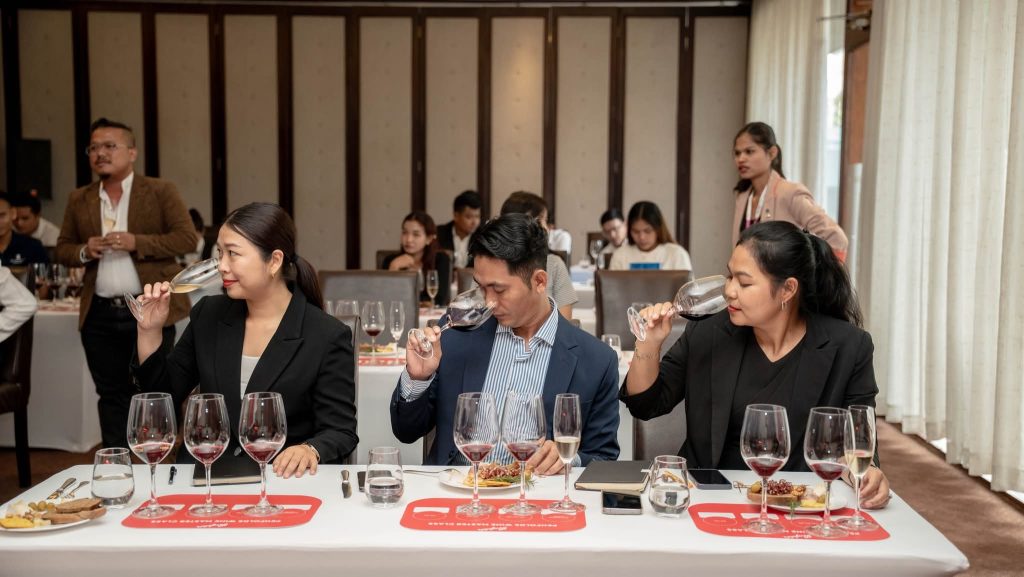
Other notable accolades include triumph at the 1979 Paris Wine Olympics, beating out the best Shiraz wines from thirty-three countries to take out the top prize. Grange was named ‘Wine of the Year’ by Wine Spectator in 1995 for the 1990 vintage. First prize in Winestate Magazine’s ‘World’s Greatest Shiraz and Syrah Challenge 2018’. 20/20 Points from Jancis Robinson for Grange 1953, 100 Points from Robert Parker’s Wine Advocate for Grange 1976. 100 Points from Nick Stock, jamessuckling.com and 2019 ‘Australian Wine of the Year’ for Grange 2015. The wine has been recognized as one of the top twelve wines of the 20th century by Wine Spectator, and the 1971 vintage was acknowledged by Fine Wine magazine as the greatest wine of the 1970s.

In August of 1995, Robert Parker, the world’s most influential wine critic of that time, wrote in his self-published newsletter The Wine Advocate that Grange was “a leading candidate for the richest, most concentrated dry table wine on planet earth.”
Prior to the much-anticipated release of the 2010 Grange in 2015; Australia’s most respected wine critic and author, James Halliday, enthused, “The reasons why it is of such all-encompassing interest are precisely the same as those that make Penfolds the most important and valuable global wine brand outside of France. Moreover, if you took the gross annual income generated by it, and capitalised that value using the same valuation method for that of any First Growth Bordeaux or Grand Cru Burgundy (Chateau Latour, Petrus, and Domaine de la Romanee-Conti included) it is the most valuable of all.
This value is strengthened by its massive vineyard holdings, its history of continuous production since 1844, and the accumulated proprietary knowledge of its senior winemakers. If you look at its more recent history since 1950, and the winemaking revolution wrought by Max Schubert, the record is even more impressive.”
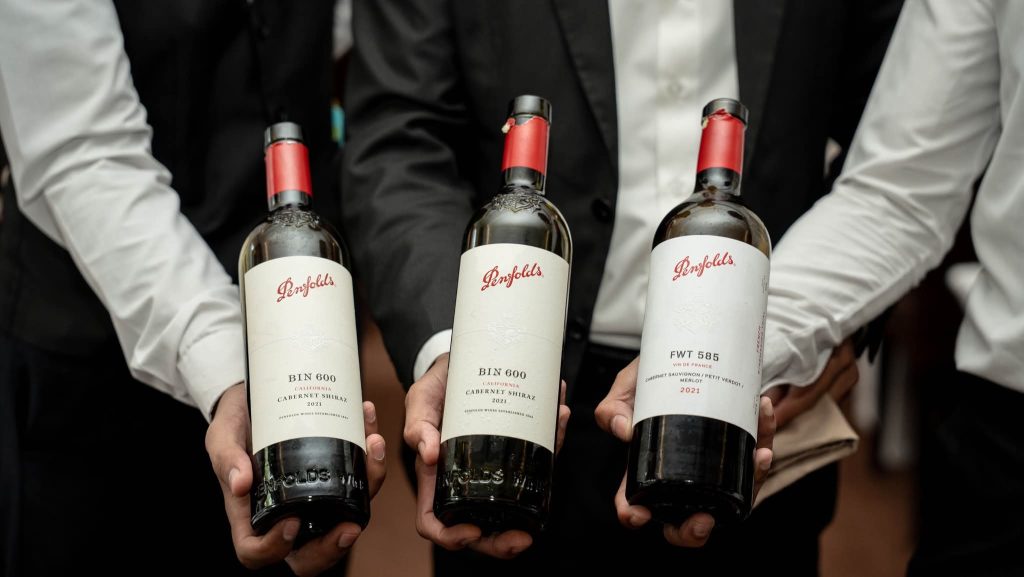
Global Expansion
Penfolds claims that Max Schubert developed a vision for a “Wines of the World”, an idea pursued by current Chief Winemaker Peter Gago. Penfolds had built its reputation on its multi-regional blending and the successful development of an attractive, definitive, and consistent ‘House Style.’
Phenomenal sales growth in Export markets began to test supply, and Asia has become the winery’s largest export market, with China the main player in that sector. Penfolds has achieved significant success in Asia, becoming recognized not just as a wine brand but as a luxury label with an enhanced reputation. The release of select super-premium wines further strengthens its status in Asia’s high-end wine market.
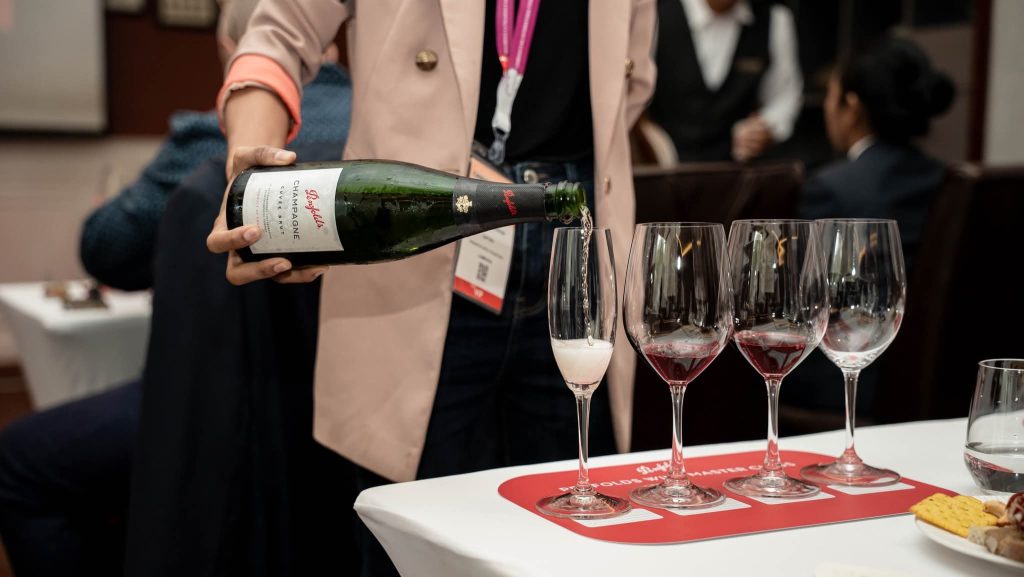
When China placed a prohibitive tariff barrier on Australian wines, it was a serious test of their ability to hang on to one of its largest and most lucrative markets. Sourcing fruit and producing wines from sites that were not facing a blockade must have quickly been a priority. Whilst there may have been a ‘historic vision’ in the company, and whilst it appears in keeping with the international palate and adventurous spirit of its most senior winemaker, commercial realities surely accelerated the project to protect its most promising markets and mitigate geopolitical risk.
Some time ago, Peter Gago was quoted as saying, “Penfolds had been able to expand throughout its history with new tiers and ranges and has always had an ethos of pioneering experimentation.”
In 2018, Penfolds released into the China market a Fortified wine they called, Lot. 518 Spirited Wine with Baijiu. A Barossa Shiraz base wine, fortified with China’s favourite local spirit, Baiju.

The number “518” was chosen because in Mandarin, it reads as “Wo yao fa,” which can be translated to “I want to be prosperous” or “get rich”. Penfolds followed this up with the release of Lot. 618 Spirited Wine with Baijiu, a base wine blend of the white grape varieties: Riesling, Gewürztraminer, and Chardonnay, fortified with Baijiu spirit.
2023 marked the release of the inaugural vintage (2021) of Penfolds’ first Chinese table wine: Chinese Winemaking Trial (CWT) 521, a blend of Cabernet Sauvignon and Marselan. Marselan is a red French wine grape that is a cross between Cabernet Sauvignon and Grenache. It was first bred in 1961 by Paul Truel near the French town of Marseillan. All this, whilst high-end Penfolds wines from France and the United States of America were also hitting global markets.

The Wines
Penfolds, Cuvee Brut, Champagne, NV
Pinot Noir 45%, Pinot Meunier 35%, Chardonnay 20%
Pale straw, light gold in colour, with a fine, consistent bead.
Floral aromas of peonies and heliotrope, some yuzu citrus and hints of blanched almond and brioche.
The palate shows a fresh and vibrant wine with an attractive, lively mousse—an elegant style with a refined texture and restrained, fruity/zesty characters. Primary fruit notes are reminiscent of green apple and lemon tart, adding some pleasant complexity are hints of nougat, biscotti, and a touch of kumquat. There is attractive, statement-making minerality and citrus on the back palate, and the wine finishes with a lingering aftertaste of lemon curds and marmalade on toast.
Very elegant in style, with pronounced but attractive acidity, splendidly easy and enjoyable to drink. Try with cured salmon, capers, and crème fraiche. 92/100
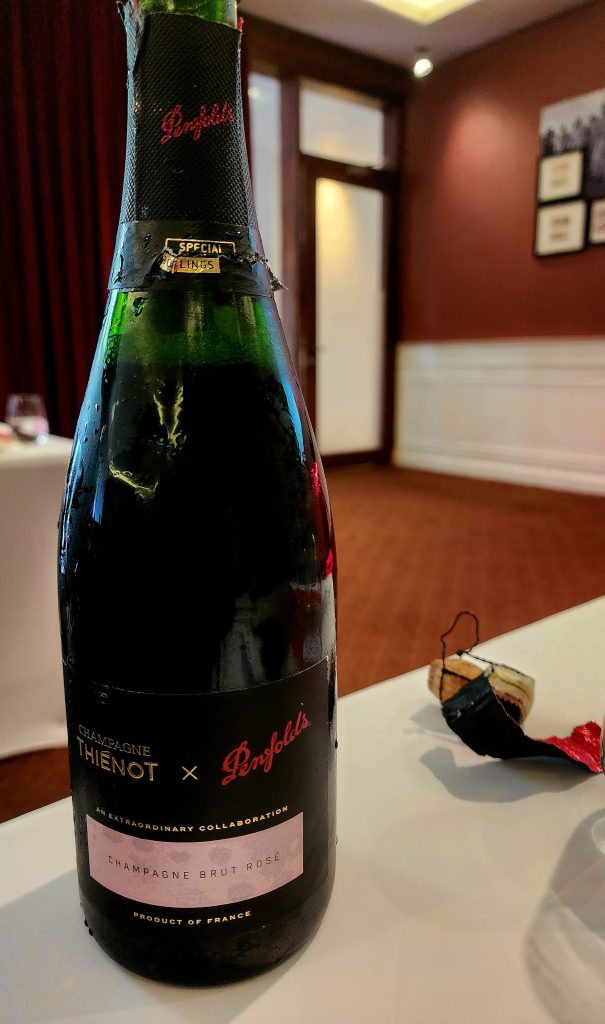
Champagne Thienot X Penfolds, Champagne, Brut Rosé, NV
Pinot Meunier 50%, Chardonnay 30%, Pinot Noir 20%
Very pale salmon in colour, with a fine and persistent bead
Aromas are of wild strawberries, tangelo, and pink grapefruit.
The palate shows a delicate, alluring mousse, followed by fruit notes of red berries (raspberries, currants), leading into hints of membrillo and rose water lokum. Acidity is fine, zesty, and subtle on the back palate. 90/100
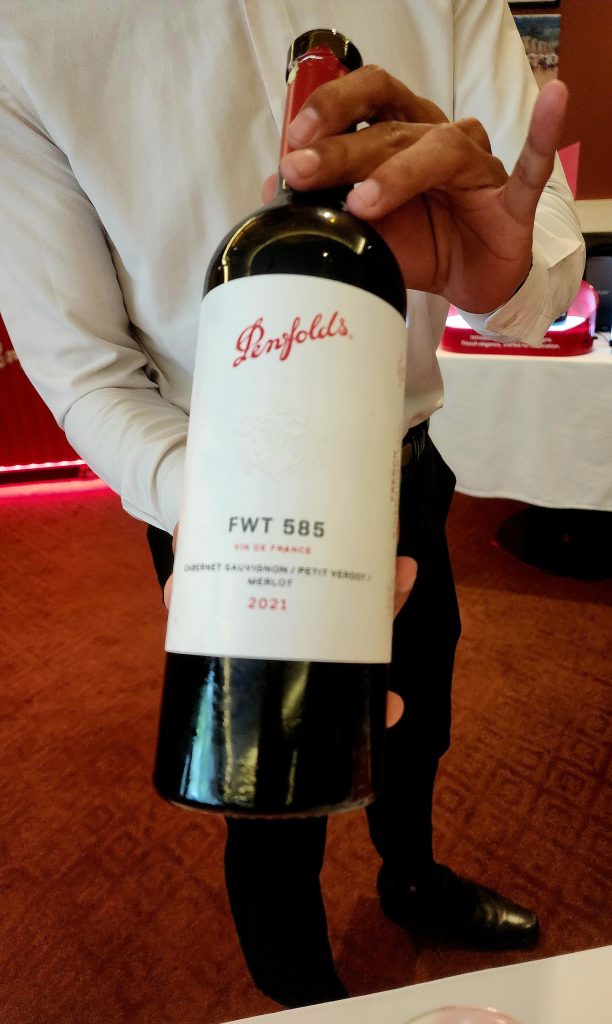
Penfolds, FWT 585, Cabernet Sauvignon, Merlot, Petit Verdot 2021
Cabernet Sauvignon 78%, Merlot 14%, Petit Verdot 8%. Sourced from across the Bordeaux region. Maturation was 12 months in French oak (32% new) and American oak (9% new) barriques.
The 2021 vintage in Bordeaux was cool and often wet, a challenging vintage for all, and one that produced lighter, fresher wines that are approachable early.
Colour: Deep crimson, garnet hues
Aromatically, the wine proudly (and somewhat surprisingly, it must be said), announces itself as from the house of Penfolds, with abundant and attractive primary aromas. There are black currants and dark fruits, subtle undertones of sage, some hoisin notes, a touch of vanilla pod, and a sprinkle of pain d’épices.
On the palate, this wine is much more about its sense of place and the characteristics of the vintage; elegant, with attractive fruit and enticing complexity. The wine glides onto the tongue, creamy in texture, delivering its core of primary fruit to the mid-palate; mulberry, blackcurrant, cranberry, leading into fine, drying tannins and savoury acidity. The Petit Verdot gives impressive length, whilst the Cabernet Sauvignon and Merlot components are clean, bright, and attractive.
The nose evokes Penfolds, while the palate clearly reflects 2021 Bordeaux, creating a stylish and provocative contrast. 91/100.
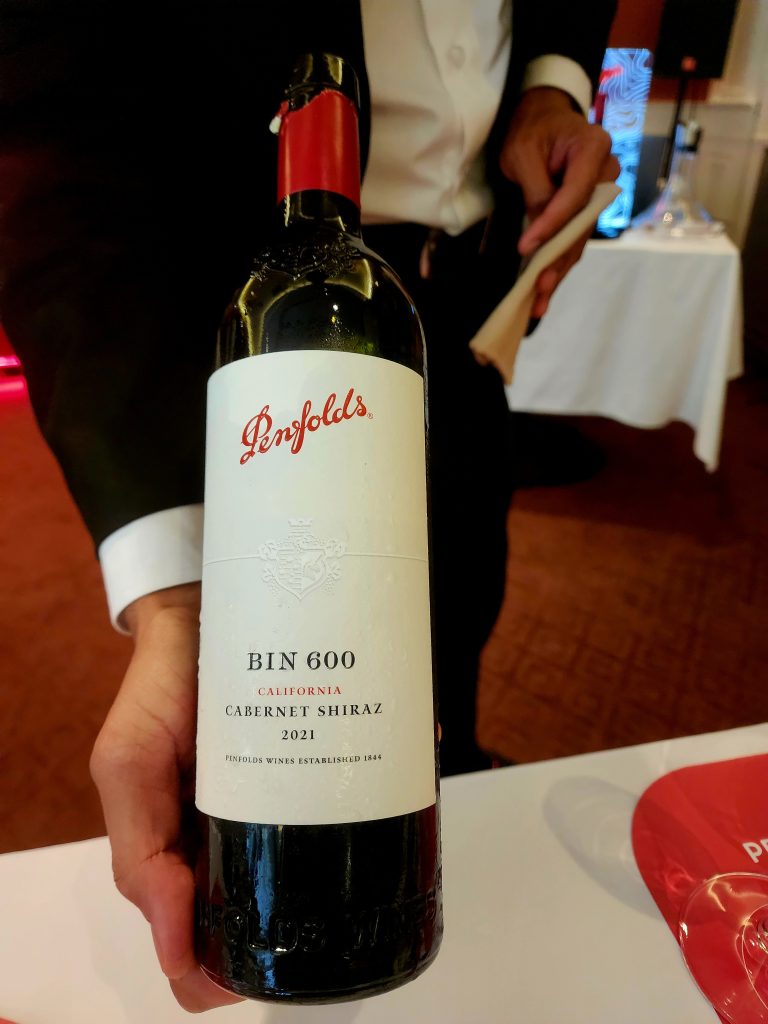
Penfolds, Bin 600, California, Cabernet Sauvignon, Shiraz, 2021
In 1998, Penfolds imported heritage vine cuttings from its Kalimna and Magill Estate vineyards in South Australia to the United States. The cuttings were then planted in Californian soil, in a Camatta Hills vineyard known as the Creston ‘600’ Ranch. As a homage to this legacy, Bin 600 derives its name from that vineyard.
Varietal Blend: Cabernet Sauvignon 85%, Shiraz 15%
Region(s): Napa Valley (Cabernet Sauvignon), Paso Robles (Shiraz)
Maturation was for 16 months in American oak barriques, 53% new.
Deep maroon in colour with plum hues.
Aromas are a compote of forest berries and peppery spices, with notes of cedar, sandalwood, and pastrami. The palate shows a medium-bodied dry red with plenty of ripe, berry flavours, blackcurrant and plum, with complex traces of clove, liquorice, and shaved coconut. Tannins are fine, and its ripe berry flavours are lingering. Overall, the wine is both interesting and enjoyable as a Penfolds Claret born and raised in the Bear State. 90/100
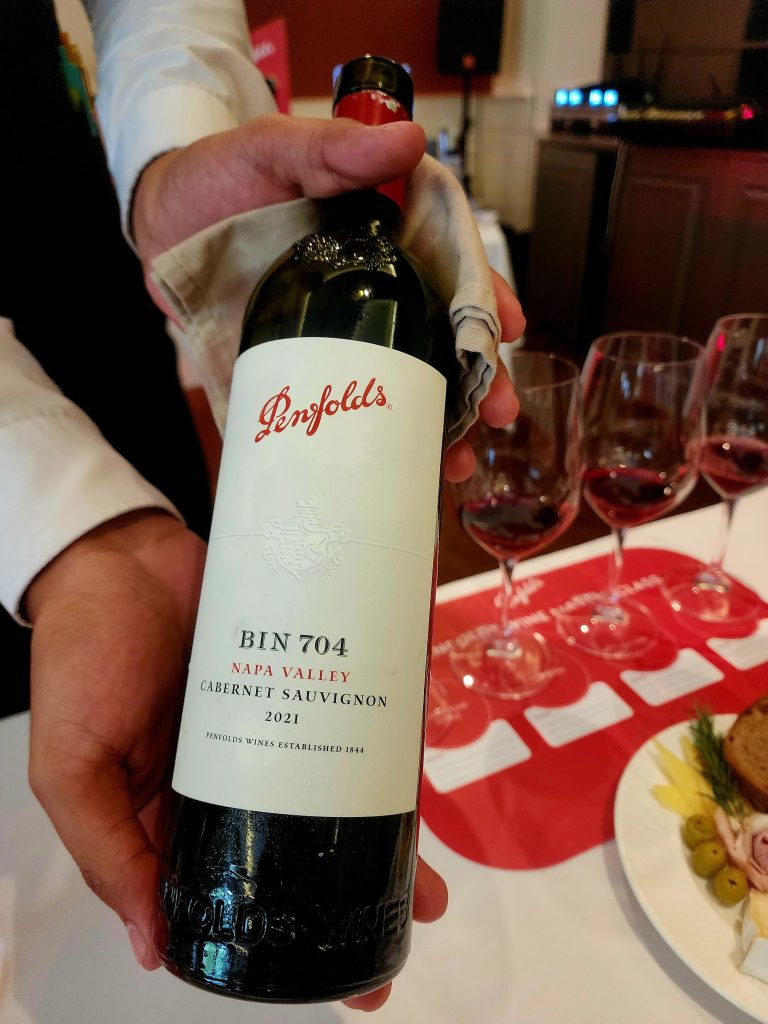
Penfolds, Bin 704, Napa Valley, Cabernet Sauvignon, 2021
Hold up a bottle of Penfolds Australian Cabernet Sauvignon ‘Bin 407’ to a mirror, and you will get a pretty good idea of where this Penfolds Cabernet Sauvignon -from the other side of the world- got its name. Basically, the wine is Bin 407’s opposite number from Napa Valley, California.
Vibrant deep garnet colour with ruby hues
Aromas are complex, dense, with cassis, forest berries, coffee grinds, tobacco leaf, cedar, a whiff of dark chocolate and a touch of graphite. The palate shows a wine of impressive pedigree, creamy on entry, leading to a deep, dark, juicy core of forest berries. There is a dusting of spice, a hint of star anise, some olive tapenade, and vanilla pod; before the fine, ripe tannins work their way onto the back palate, and a fine line of acidity brings down the curtain. Only for the ripe berry flavours to come back out to take a final, expressive, and lingering bow. This is an exceptional Napa Cabernet from Penfolds, the wine clearly the best of the tasting by some margin. 95/100.
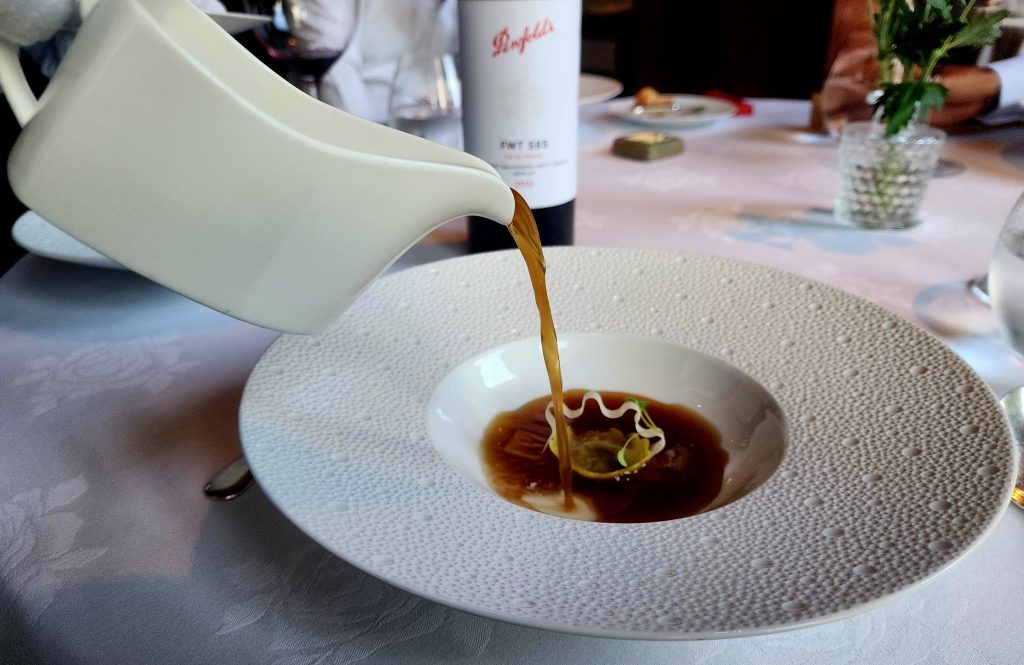
Topaz Shinning
The event was held at Topaz restaurant, overseen by a doyen of the hospitality industry in Cambodia and the president of the Cambodian Sommeliers Association, the ever-charming Ms Eden Gnean.
The Sommeliers Association is a friendly career guide, support mechanism and source of training and education for the Kingdom’s Sommeliers; it is a resolute, thriving, and enthusiastic community.
A pre-tasting lunch at Topaz is not to be refused, and the kitchen surpassed even its own high reputation. The Penfolds FWT (French Wine Trial), Bordeaux, was a delightful accompaniment. The goose consommé, followed by the goose and duxelles and spinach cannelloni, was to die for. An absolutely brilliant dish, cooked to perfection, it was an unforgettable pairing.

Whether these international releases ultimately dilute or redefine the Penfolds identity remains an open question. Yet what is unmistakable is the persistence of that house style—powerful, polished, and confident, even when expressed in the soils of Champagne, Bordeaux, or California. These wines are not mere extensions of a brand; they are an evolving expression of one of the world’s most influential winemaking philosophies. For winemakers and consumers alike, they are journeys worth taking.

Darren Gall
